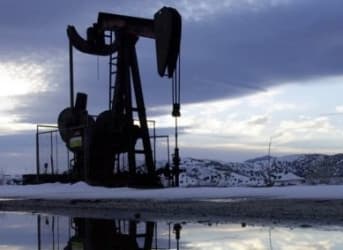Oil prices will remain subdued for the next 20 years.
That comes from a new policy brief from Stanford economist Frank Wolak, who says that a series of phenomena – surging U.S. shale production, a weakening OPEC, the shale revolution spreading globally, efficiencies in drilling, and more natural gas substitution for oil – will combine to prevent oil prices from rising above $100 per barrel anytime soon.
Wolak correctly identifies several trends that are already underway, several of which contributed to the 2014-2015 oil bust.
But there are very good reasons as to why the notion that oil prices will not rebound and instead stay in a moderate band of $50 to $60 per barrel over the next 20 years, as Wolak suggests, is a bit optimistic (or pessimistic, depending on your point of view). Wolak does offer some caveats for why his scenario for tepid oil prices may not play out, but they are treated more as outside risks rather than real possibilities. Related: Earthquake Case Could Doom Fracking In Oklahoma
Let’s examine some of his points. First is the argument that shale production has truly upended global supplies. Citing a 5 million barrel-per-day increase from North America – 4 million from U.S. shale and 1 million from Canada’s tar sands – Wolak wisely notes the role that shale has played in causing oil prices to crash over the past year. But the shale boom will likely be temporary. Most estimates project that U.S. shale will begin to fizzle after the next five years or so. The IEA in its 2014 World Energy Outlook said that U.S. shale will peak and then decline in the early 2020’s. Some think it could happen even sooner.
After U.S. shale stops driving global growth, what are we left with? The IEA says that an overwhelming amount of oil growth will need to come from the Middle East, particularly from Iraq. Iraq, a war-torn country rife with insecurity and political gridlock, is expected to account for 50 percent of the growth in oil production that is needed in the 2020s. “We now have a problem,” IEA Chief Economist Fatih Birol said at a February conference, referring to the world’s likely inability to meet rising demand over the next 20 years.
Moreover, an estimated $900 billion in investment each year will be needed to meet demand through 2030, an astronomic sum considering investment only reached a little under $700 billion in 2014, and is set to decline by around 17 percent in 2015. Massive cut backs in capital expenditures over the next few years will plant the seeds for the next oil price spike. Related: US Oil Demand Is Alive And Well
Another major reason that Wolak cites for why oil prices will remain stable and moderate is the fact that the shale revolution will spread like wildfire around the world. That is possible. Countries like China, Russia, and Argentina have massive shale oil and gas resources that in some cases even surpass those of the United States. But the spread of shale technology has proven stubborn, owing to a very complex set of circumstances. In Europe, the excitement in Poland in particular has proven to be ill-founded. After failing to find any commercial volumes of oil and gas and drilling some dry holes, oil majors Chevron and ExxonMobil, among others, packed up and left. Opposition to fracking has also walled off major sources of energy in Europe.
In China, the going has been no better. The lack of infrastructure, complex geology, and increasingly scarce and contaminated water are all throwing up major roadblocks. Argentina is trying its best to replicate the shale boom, but a web of rules on the movement of capital, plus regulated prices that hurt investment over the long-term (but in the current low-price environment, are currently helping Argentina) could constrain further development.
On the other hand, Wolak does cite the fact that increasing global efforts to deal with carbon pollution, the falling cost of alternatives, standardization and innovation, and weaker-than-expected demand could all keep a lid on prices. Related: Oil Prices To Fall Or Fly Depending On Iranian Nuclear Talks
Those are all very possible scenarios. But there is also a wide array of upside forces that Wolak leaves out. Just to name a few: rising interest rates will increase the cost of capital; a wave of bankruptcies this year could scare away banks, also increasing the cost of capital; declining conventional production; and the increasing shift to expensive oil (deep offshore, Arctic) to replace maturing fields will increase the marginal cost of production. Plus, if the world does experience fast and robust increases in oil demand (think China and India), can oil producers keep up?
In other words, Wolak’s scenario largely depends on several optimistic trends all coming true. If we have learned anything over the past year, it is that oil markets are highly volatile. A long and sustained period of moderate oil prices just isn’t likely.
ADVERTISEMENT
By Nick Cunningham of Oilprice.com
More Top Reads From Oilprice.com:
- Rare Earths Problem Could Have A Nuclear Solution
- Low Oil Prices Not Enough To Kill Off Oil Sands, Yet
- U.S. Oil Glut Story Grossly Exaggerated


















